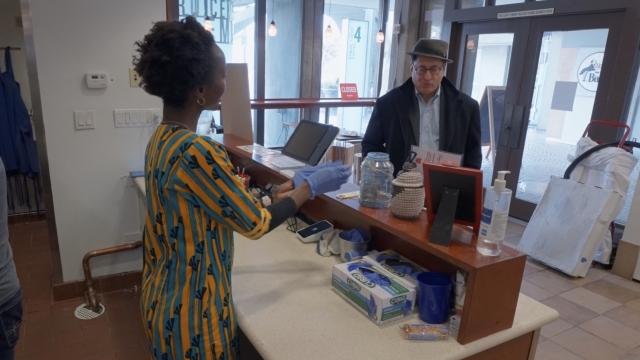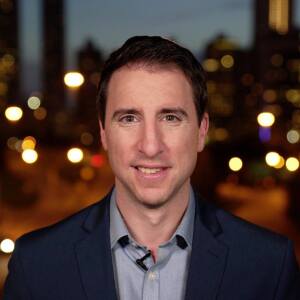The space where Hilary Passman runs Devil's Teeth Bakery used to be a restaurant.
Ben Trefny produces radio events in an old Ricoh Copy Center.
And at the bottom-floor restaurant named Teranga, cheffed by Nafy Flatley — it used to be a Mrs. Fields Cookies.
Last summer, the restaurant, the radio station, and the bakery all held nothing.
Passman, Trefny, and Flatley operate in downtown San Francisco. They run small businesses that could never have afforded their new spaces until the plight and blight catalyzed by COVID-19.
"We don't have the population we used to have," Flatley said. "We don't have the number of tourists we used to have."
SEE MORE: What does Wall Street's new milestone mean for everyday Americans?
Cities nationwide have struggled to bring foot traffic back to their centers. San Francisco's skyscrapers hosted companies in tech and finance, industries far more suited to working from home. Now a third of its offices are vacant. A third of its foot traffic has vanished.
"Things were going to change downtown," said Sarah Dennis Phillips, who runs the city's Office of Economic and Workforce Development. "It's just that we got the problem really quick and really hard because of the way COVID collapsed a 30-year change into a three-year change," she said.
Rapid change means rapid response. Leaders from Boston to the Biden administration are deploying grants and tax breaks to convert office buildings into housing. Other cities have doubled down on tourism.
In San Francisco, they've started Vacant to Vibrant, a collaborative effort between the city and a nonprofit named SF New Deal. Seventeen small businesses received six months of free rent to pop up across nine empty storefronts. A similar effort, called Project Pop-Up, was rolled out in Pittsburgh.
"It's let us get a foot in the door when we wouldn't have been able to before. It's been for us a fantastic six months," Passman said.
The city hopes it does something else.
"Perception is a really big challenge for us," Phillips said.
Since COVID, reports of crime, massive homelessness, and major stores shutting their doors have pummeled San Francisco's image. Across the street from Devil's Teeth is the latest Walgreens to announce its closing.
"My daughter is in New Jersey right now, and she has people asking her how she could live in San Francisco because it's so unsafe," Passman said. "I mean, if you've been downtown, you can see it's clean and it's safe."
The newest numbers show a noticeable drop in crime in San Francisco, citywide — and especially downtown. The need to flip the narrative is crucial, because in most cities, the most foot traffic comes not from residents or workers, but from visitors.
"We just need more people on our sidewalks," Phillips said. "You know, we relied too heavily on a bunch of office workers being the people on the sidewalks that made it feel lively and exciting before."
The limits of programs like these are obvious: free rent ends for most after February in the San Francisco example.
The businesses must now negotiate long-term leases with major developers. And a handful of success stories hardly offsets the image papered windows over spaces that still hold nothing inside. But, the larger goal is to begin to envision downtowns – in San Francisco, and everywhere – as something different.
"I think downtown will eventually come back," Flatley said. "But, it's not going to be the same downtown that we knew in 2018 or 2019."
Trending stories at Scrippsnews.com




